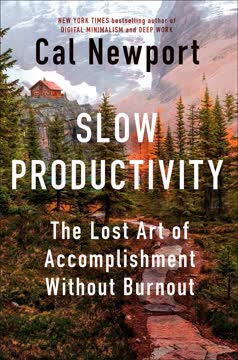Key Takeaways
1. Trust is the foundation of effective leadership and relationships
To inspire trust, put others first.
Trust is paramount. In today's world, characterized by widespread skepticism and frequent exposure of fraudulent behavior, trust has become the most crucial element for achieving personal and professional success. The ability to inspire trust in others is not just a valuable skill; it's a necessity for effective leadership and meaningful relationships.
The age of manipulation is over. With the advent of the internet, the proliferation of traditional media, and the ubiquity of social media, deceptive practices are routinely exposed. This has ushered in what many refer to as "The Age of Distrust." In this environment, leaders who rely on manipulation or coercion find their influence rapidly diminishing.
Authentic trust-building is the new currency. To thrive in this era, one must master the art of genuinely inspiring trust. This involves a fundamental shift in mindset: prioritizing the needs, wants, dreams, and desires of others above one's own. By consistently demonstrating this other-centered approach, leaders create an environment where people naturally want to follow and contribute.
2. The Code of Trust: Five rules for gaining trust and becoming a leader
The single most compelling trait of trust is simple humility.
The Code of Trust provides a systematic approach to becoming trustworthy and conveying that trustworthiness to others. This code consists of five fundamental rules:
- Suspend your ego
- Be nonjudgmental
- Validate others
- Honor reason
- Be generous
Humility is the cornerstone. The first rule, suspending your ego, is perhaps the most challenging but also the most crucial. It requires putting others' interests ahead of your own, a practice that runs counter to many traditional notions of leadership but is essential for building genuine trust.
Respect and understanding are key. Being nonjudgmental and validating others doesn't mean agreeing with everyone; rather, it means making a sincere effort to understand different perspectives. This approach creates an environment where people feel safe to express themselves, fostering open communication and collaboration.
3. Aligning goals: The first step to inspiring trust
If you align your goals with theirs, why shouldn't they follow your lead?
Identify and align goals. The first step in inspiring trust is to determine your ultimate goal and find ways to align it with the goals of others. This process involves:
- Clearly defining your own long-term objectives
- Taking the time to understand the aspirations of those around you
- Finding creative ways to merge these goals, making others' objectives part of your own
Create mutual benefit. When you demonstrate that achieving your goals will also help others reach theirs, you create a powerful incentive for cooperation and trust. This alignment of interests forms the basis for lasting, mutually beneficial relationships.
Lead with a shared vision. By focusing on collective goals rather than personal agendas, leaders can inspire a sense of unity and purpose. This approach not only builds trust but also harnesses the power of combined efforts, leading to greater achievements than would be possible individually.
4. Understanding context: The key to connecting with others
You cannot deal with people effectively unless you know how they see the world.
Context is crucial. To truly connect with others and inspire their trust, it's essential to understand their unique perspective or "context." This involves learning about their:
- Traits and personality
- Desires and motivations
- Demographic background
- Ideas and beliefs
Tailor your approach. Armed with this contextual understanding, you can adapt your communication style and approach to resonate more effectively with each individual. This personalized approach demonstrates respect and consideration, key components in building trust.
Avoid arguing context. One of the most common mistakes in interpersonal interactions is trying to force others to see things from your perspective. Instead, strive to understand and work within their context, finding common ground and shared interests.
5. Crafting encounters: The art of strategic meetings
A carefully crafted meeting is a work of art, and the setting for success.
Plan for success. Effective leaders understand that inspiring trust often hinges on carefully planned encounters. This involves strategically considering:
- The people involved and their primary motivations
- The optimal time and place for the meeting
- The precise subject matter to be discussed
Create the right environment. Pay attention to details that can make others feel comfortable and valued. This might include choosing a location that puts them at ease, setting a realistic time frame, or preparing thoughtful questions that demonstrate your interest in their perspective.
Be flexible. While careful planning is crucial, it's equally important to remain adaptable. Be prepared to adjust your approach based on the other person's reactions and the flow of the conversation. This flexibility demonstrates your commitment to understanding and meeting their needs.
6. Effective communication: Speaking the language of trust
The language of trust is founded in a philosophy of reason, respect, and consideration.
Master the language of trust. Effective communication is central to building and maintaining trust. This involves:
- Using a vocabulary that evokes trust
- Eliminating words and phrases that trigger wariness or defensiveness
- Focusing on reason and mutual respect in all interactions
Listen actively. One of the most powerful tools in trust-building communication is active listening. This means:
- Giving your full attention to the speaker
- Asking thoughtful follow-up questions
- Paraphrasing to ensure understanding
- Acknowledging emotions and perspectives
Non-verbal communication matters. Pay attention to your body language, tone of voice, and facial expressions. Ensure that these non-verbal cues align with your words and reinforce your trustworthy intentions.
7. Building a tribe of trust: Expanding your network of influence
There is no finite limit to the size of a tribe of trust.
Create a network of trust. As you consistently apply the principles of trust-building, you'll naturally begin to form a "tribe" of people who trust you and whom you trust in return. This network can expand exponentially as each member becomes a hub for their own connections.
The Hub and Spoke Method. Visualize your trust network as a wheel, with you at the center (the hub) and your trusted connections as spokes radiating outward. Each of these connections can, in turn, become the hub of their own wheel, creating an ever-expanding web of trust and influence.
Leverage collective strength. A robust tribe of trust provides:
- Diverse perspectives and expertise
- Expanded opportunities and resources
- A support system during challenging times
- Increased influence and reach in various domains
8. Managing expectations: The secret to maintaining trust
The only thing you can control in life is your expectations.
Set realistic expectations. One of the quickest ways to erode trust is by failing to meet expectations. To avoid this:
- Be clear and specific about what you can deliver
- Avoid over-promising or setting unrealistic timelines
- Communicate openly about potential challenges or delays
Manage others' expectations. Help those around you develop realistic expectations by:
- Providing regular updates on progress
- Being honest about limitations or obstacles
- Offering alternatives when the original plan isn't feasible
Be flexible. Recognize that circumstances change, and be prepared to adjust expectations accordingly. This adaptability demonstrates your commitment to achieving the best possible outcome, even when faced with unexpected challenges.
9. The power of apology: Strengthening relationships through humility
Sometimes the best way to connect is just to say, "Tough day?"
Apologize sincerely. When mistakes happen (and they inevitably will), a sincere apology can be a powerful tool for maintaining and even strengthening trust. Effective apologies:
- Take full responsibility without making excuses
- Express genuine remorse
- Offer to make amends or correct the situation
- Commit to preventing similar issues in the future
Lead by example. Leaders who are willing to apologize when appropriate demonstrate humility and accountability. This sets a positive example for others and creates an environment where people feel safe admitting and learning from mistakes.
Use empathy. Often, acknowledging someone's difficult experience or emotions can be as powerful as an apology. Showing that you understand and care about their perspective can go a long way in maintaining trust during challenging times.
10. Navigating toxic environments: Applying trust principles in challenging situations
Wise people fight fire with water.
Rise above negativity. When faced with toxic individuals or environments:
- Maintain your commitment to the principles of trust
- Avoid responding in kind to negative behaviors
- Focus on your ultimate goal rather than getting drawn into conflicts
Seek understanding. Even in difficult situations, try to understand the context and motivations of those creating toxicity. This understanding can help you:
- Respond more effectively
- Find potential solutions
- Maintain your own emotional balance
Be the change. By consistently applying trust-building principles in challenging environments, you can:
- Serve as a positive example for others
- Gradually influence the overall culture
- Create pockets of trust and positivity within toxic systems
Remember, maintaining trust-based behavior in difficult situations is not easy, but it's often the most effective way to create lasting positive change.
</rewrite>
Last updated:
FAQ
What's The Code of Trust about?
- Trust as a Foundation: The Code of Trust by Robin Dreeke emphasizes the critical role of trust in both personal and professional relationships, highlighting it as the cornerstone of effective leadership.
- Five Rules of Engagement: The book introduces five key rules to inspire trust: suspend your ego, be nonjudgmental, validate others, honor reason, and be generous.
- Practical Insights: Dreeke shares real-life experiences from his FBI career, demonstrating how these principles can be applied to foster trust and collaboration.
Why should I read The Code of Trust?
- Enhance Leadership Skills: The book offers actionable insights to improve leadership abilities by teaching how to inspire trust in others.
- Real-World Examples: Engaging anecdotes from Dreeke's FBI career make the concepts relatable and easier to understand.
- Universal Relevance: The principles are applicable to various aspects of life, including personal relationships and workplace dynamics.
What are the key takeaways of The Code of Trust?
- Trust is Essential: Trust is the social tissue that enables effective collaboration and relationship-building.
- Five Rules of Engagement: Mastering the rules—suspend your ego, be nonjudgmental, validate others, honor reason, and be generous—leads to meaningful connections.
- Four Steps to Trust: A practical action plan includes aligning goals, applying context, crafting encounters, and connecting with others.
What are the best quotes from The Code of Trust and what do they mean?
- "To inspire trust, put others first.": Highlights that true leadership involves prioritizing others' needs over your own.
- "You can never have too many friends.": Emphasizes the importance of building relationships and connections.
- "Trust is the touch you felt from your mother’s hand.": Illustrates trust as a fundamental human need, akin to love and safety.
What are the Five Rules of Engagement in The Code of Trust?
- Suspend Your Ego: Emphasizes humility and putting others' needs first to create a trusting environment.
- Be Nonjudgmental: Encourages understanding and acceptance of others' perspectives to foster open communication.
- Validate Others: Recognizing and affirming others' feelings and opinions builds rapport and trust.
- Honor Reason: Stresses honesty and rationality in communication, avoiding manipulation.
- Be Generous: Generosity in relationships fosters reciprocity and deeper connections.
How can I apply the Code of Trust in my daily life?
- Start with Self-Reflection: Assess your behaviors and attitudes, focusing on areas for improvement like generosity.
- Practice the Five Rules: Incorporate the rules into daily interactions, prioritizing others and validating their experiences.
- Engage in Active Listening: Enhance listening skills to understand others' perspectives, strengthening relationships.
What are the Four Steps to Trust in The Code of Trust?
- Align Your Goals: Identify and merge your goals with others to create a shared vision.
- Apply the Power of Context: Understand the context of interactions, including backgrounds and motivations.
- Craft Your Encounters: Prepare for meetings to create a positive atmosphere for trust-building.
- Connect: Build genuine connections by validating others and being generous.
How does the Code of Trust relate to leadership?
- Foundation of Leadership: Trust is essential for motivating and guiding teams, serving as a foundational principle for effective leadership.
- Building Strong Teams: Applying the five rules creates an environment where team members feel valued, leading to increased collaboration.
- Long-Term Success: Trustworthy leaders foster loyalty and commitment, creating a sustainable organizational culture.
How can I improve my trustworthiness according to The Code of Trust?
- Self-Assessment: Reflect on your interactions to identify areas for improvement, such as being more generous.
- Practice the Five Rules: Actively incorporate the rules into daily life, focusing on putting others first.
- Seek Feedback: Ask for feedback from trusted colleagues or friends to make adjustments and improve trust-building.
What role does validation play in building trust according to The Code of Trust?
- Affirms Others' Worth: Validation shows recognition and appreciation of others' feelings and opinions.
- Encourages Open Communication: People are more likely to share openly when they feel validated.
- Strengthens Relationships: Regular validation creates a supportive environment, fostering deeper connections.
How does The Code of Trust address trust in the digital age?
- Challenges of Digital Communication: Highlights depersonalization in online interactions, leading to misunderstandings.
- Importance of Humility and Validation: Maintaining humility and validating others counteracts anonymity and distance.
- Creating a Code of Digital Conduct: Proposes principles for effective digital communication, emphasizing clarity and empathy.
What is the significance of context in building trust according to The Code of Trust?
- Understanding Perspectives: Context helps understand others' backgrounds and motivations, crucial for effective interaction.
- Avoiding Miscommunication: Applying context prevents misunderstandings and fosters clearer communication.
- Enhancing Relationships: Recognizing context enables validation of experiences, strengthening relationships and collaboration.
Review Summary
Readers generally found The Code of Trust insightful and valuable, praising its practical advice on building trust and leadership skills. Many appreciated the author's real-life examples and conversational tone. Some found the book repetitive or basic, while others considered it life-changing. The five principles and four actions for inspiring trust were frequently highlighted as key takeaways. A few readers noted editing issues, but most found the content engaging and applicable to both personal and professional relationships.
Similar Books









Download PDF
Download EPUB
.epub digital book format is ideal for reading ebooks on phones, tablets, and e-readers.





